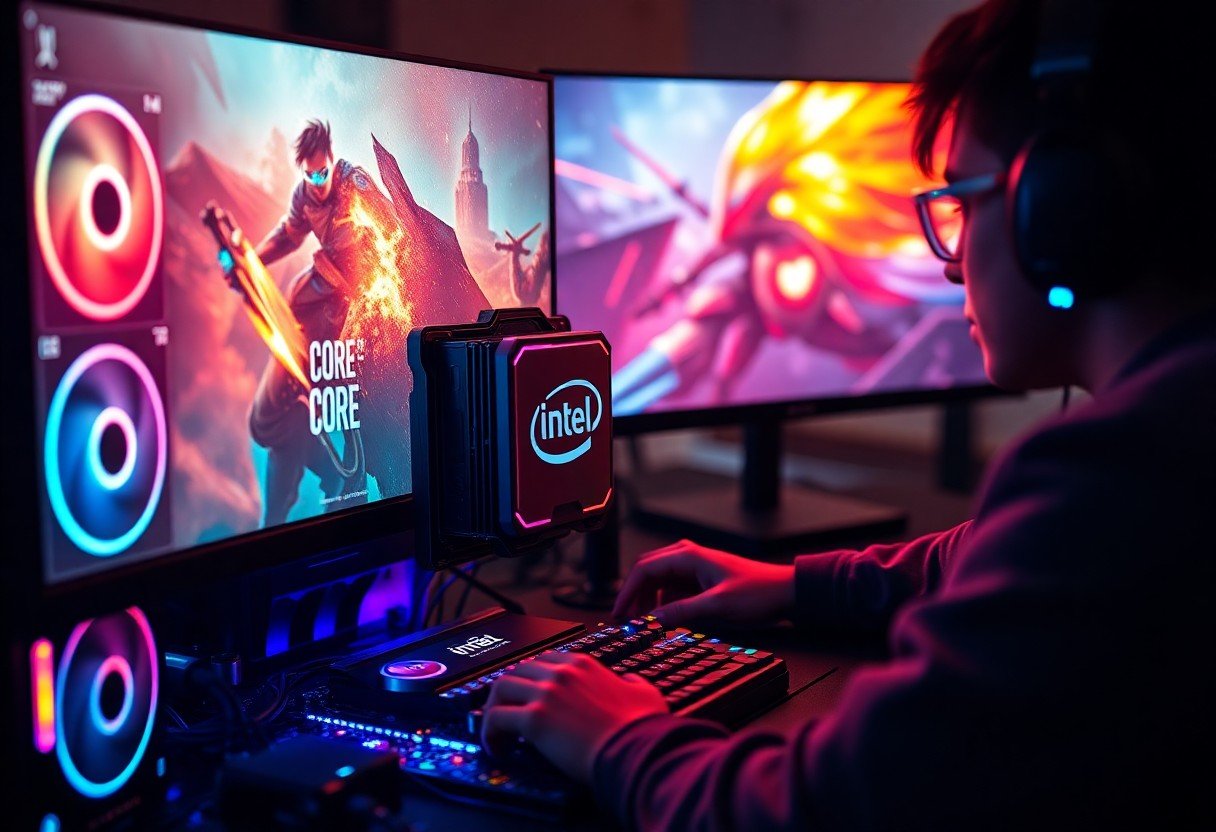Transcendent advancements in CPU design are embodied in Intel’s Core Ultra 9285K, but your gaming experience may suffer as a result. While power draw decreases and heat output drops mark significant improvements, this new flagship processor paradoxically delivers worse gaming performance compared to previous generations. As you consider your next build, it’s imperative to weigh these efficiency gains against the disappointing frame rates that may undermine your gaming ambitions.
Efficiency Improvements Over Previous Generations
Previous iterations of Intel’s CPUs often struggled with power consumption and heat generation, but the Ultra 9 285K marks a significant advancement in efficiency. Utilizing Intel’s latest 3D packaging technology and Arrow Lake architecture, this processor draws less power while delivering up to 15 percent better performance in multithreaded tasks compared to its predecessor, the Core i9-14900K.
Disappointing Gaming Performance
Clearly, while the Ultra 9 285K excels in efficiency, its gaming performance disappoints. In tests across popular titles, this CPU trails behind the 14th Gen i9-14900K, offering frame rates that are up to 20 percent lower in demanding games like Forza Motorsport, leaving you questioning your investment.
To put it plainly, despite the impressive efficiency gains, the Ultra 9 285K falls short in gaming benchmarks, often delivering performance worse than Intel’s previous generation CPUs. For instance, you may find that in Cyberpunk 2077, it lags almost 9 percent behind the 14900K, leading to frustration for gamers seeking the best performance. With virtualization-based security features enabled, the performance gaps are even more pronounced, pushing you to consider disabling them to get reasonable performance. Ultimately, the Ultra 9 285K may not meet your gaming needs if you prioritize high frame rates and responsiveness.

New Features of the Ultra 9 285K
With the introduction of the Core Ultra 9 285K, Intel showcases its first CPU integrated with a neural processing unit (NPU) for enhanced AI task acceleration. This cutting-edge chip is designed for the new LGA 1851 socket, requiring an update to your motherboard. It employs advanced 3D packaging technology and the Arrow Lake architecture, promising increased power efficiency, particularly vital for power-conscious users.
Requirements for Upgrade (LGA 1851 Socket)
Requirements for the Ultra 9 285K upgrade include a compatible motherboard featuring the new LGA 1851 socket. As this is a significant shift from previous Intel generations, all existing motherboards will need replacement. Thus, you should plan not only for the CPU upgrade but also for investing in a new motherboard that supports the latest 800-series chipset functionalities.
Specifications for the Ultra 9 285K necessitate that you acquire a motherboard equipped with the LGA 1851 socket. This new socket supports up to 48 PCIe lanes, with the potential for 20 of those to be Gen 5 from the CPU, enhancing connectivity and future-proofing your system. The Z890 motherboards also allow for upgraded features like integrated Wi-Fi 6E and Thunderbolt 4. However, be aware that if Intel chooses to phase out support for the LGA 1851 socket in the near future, you might find yourself needing yet another motherboard upgrade, further complicating your upgrade path.

Performance Comparison to Core i9-14900K
Even though Intel’s Core Ultra 9 285K showcases impressive efficiency gains, its gaming benchmarks tell a different story when compared to the Core i9-14900K.
| Metric | Core Ultra 9 285K vs. Core i9-14900K |
|---|---|
| Gaming Performance | 8% lower in Shadow of the Tomb Raider |
| Cyberpunk 2077 | 9% lower performance |
| Forza Motorsport | 20% lower performance |
Analysis of Specific Game Performance
Even in well-optimized titles, the Ultra 9 285K tends to lag behind its predecessor, leaving gamers disappointed.
A breakdown of gaming performance shows that in titles like Shadow of the Tomb Raider, the Ultra 9 285K delivers frame rates that are almost 8% lower than the Core i9-14900K. In Cyberpunk 2077, it trails by nearly 9%, while Forza Motorsport sees a significant gap of 20% lower frame rates. This regression suggests that while you may benefit from improved power efficiency, your gaming experience could suffer, undermining the value of upgrading.
Potential Issues with Socket Longevity
Some users worry about the longevity of Intel’s LGA 1851 socket, especially with recent reports suggesting that the upcoming Arrow Lake-S refresh may be canceled. This uncertainty leaves you questioning whether your investment in the new Ultra 9 285K will require another motherboard upgrade in the near future. With Intel’s track record of quickly replacing its sockets, you may want to consider the potential need for further changes down the line.
AMD’s Competitive Advantage
For many PC gamers, AMD presents a more appealing option, particularly with the performance capabilities of its 7800X3D CPU, which decisively outperforms Intel’s Ultra 9 285K in gaming. This advantage is bolstered by AMD’s commitment to its AM5 platform, ensuring you won’t have to grapple with rapid socket changes any time soon.
With AMD’s 7800X3D easily surpassing the Ultra 9 285K in gaming benchmarks, it positions itself as the go-to choice for those building gaming rigs today. The upcoming 9000-series X3D desktop CPUs, launching on November 7th, further solidify AMD’s edge in your options. Moreover, with a promise to support the AM5 platform until 2027 or beyond, you can invest confidently, knowing your system will remain relevant and powerful for years to come.
Intel’s Core Ultra 9285K: A Breakthrough in Efficiency but Falls Short for PC Gamers
Drawing together the performance insights, the Intel Core Ultra 9285K offers impressive power efficiency and temperature management, but as a gamer, you may find its gaming capabilities underwhelming compared to its predecessor, the 14th Gen chips. If your priority is gaming performance, especially in demanding titles, the Ultra 9285K may not meet your expectations, pushing you to consider alternatives, like AMD’s offerings, which have shown superior results in gaming scenarios.









